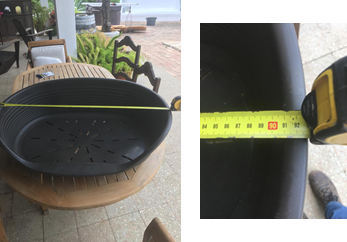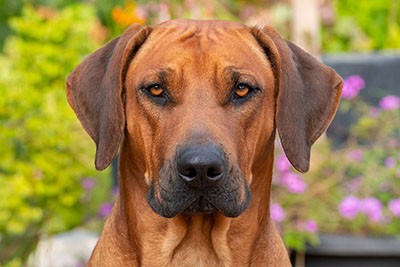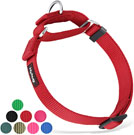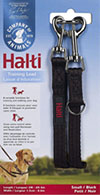The following is a bare minimum of what you absolutely will need when you come home with your new puppy.
Bringing your puppy home in the car: if you are going to have one of you hold the puppy, then sit in the back seat as you would with a baby. Bring lots of towels and wipes and a bowl of water and the pup may pee in fear and may get thirsty on the ride home.
Crate
Many owners believe ain crate training their puppy this thought is that this is the safest place for him to stay while you are away. The crate is designed not only to protect your belongings, but also to keep your puppy from hurting himself or eating something he shouldn’t. As far as size goes, I suggest the 106 cm to 122 cm length size as this will fit nearly all adult Ridgebacks. It will fit in your bedroom easier for crate training at night). You can usually find some good deals on Amazon for these crates. There are also some really nice crate covers/bed sets out there as well, but wait for these until your pup is an adult and stops chewing.
Collar
The best collar to use is an adjustable nylon collar, that way you can adjust it, as your puppy grows. After your puppy reaches adulthood then you can get a fancy collar, but when they are pups it’s kind of a waste of money. Adjustable Martingale collars are highly recommended as they prevent the puppy and adult dog from backing out or slipping out of their collar.
Leash
I recommend a 2m length. I do not recommend a Flexi-Lead or any type of extendable leash. I feel that these leads give your dog the chance for an accident. If you happen to be looking the other way, and your dog runs out into the road, or is confronted by a small child, it just is not safe. They don’t give you enough control. The Canine Good Citizen test must also be done with a 2m lead, For training purposes a 4 foot or 6 foot leash is best. You can find a variety of leather leashes on Amazon as well.
ID Tags
Even before you bring your puppy home; make sure you have an ID tag made (or a small size embroidered collar with your phone number). If you still haven’t thought of a name for your puppy yet, that’s okay. At the very least, put your phone number on there. I have also used the phrase “REWARD” with my phone number to ensure if something does happen, there’s a higher chance of me getting my dog/puppy back.
Toys/Chewables
Safe toys for your puppy to play with include toys made specifically for dogs. Items such as stuffed toys, Kong toys, and consumable animal parts are good chewable items. I do not recommend large knuckle bones or soup bones as they will break teeth. All toys should be given with supervision. I do not recommend Nylabones, any type of rawhide. Rawhide actually causes gastric upset, and is made with dangerous chemicals and bleach. Please do not give Greenies, as they have been known to cause choking and gastric blockages resulting in surgery. Safe chews are made of completely digestible material. Acceptable chews are tendons, bully sticks, cow ears, lamb ears, trachea, hooves, antlers, lamb/beef lung, or any other chemical free digestible chew. Remember to give chewable items in moderation. Teething/young puppies are going to chew on everything. I have found that cow ears and lamb ears provide a good outlet for the never-ending chewing phase.
Bed & Bedding
When your pup is young, the best bedding is in the form of old blankets, towels, and some cheap pillows from the China Mart. Your puppy is going to chew, so wait to use the expensive beds, until your puppy is an adult, and out of the chewing stages or you will quickly be replacing it. After trying many others, we use the IKEA dog cushions, the best quality for the price.
The bed itself should be positioned where the puppy can see you and perhaps one in your bedroom at least the first 7-10 nights while the puppy adjusts, we use these 90cm across oval plastic beds; our pups & dogs love them.

Bowls
There are many types of bowls out there. I urge you to stay away from plastic as it can easily be chewed. I used stainless steel bowls. We also use a large glass bowl in our kitchen for water and keep it filled with fresh water daily. I do not recommend a raised feeder as the use of a raised feeder has been linked to bloat for kibble fed dogs.
Food
I will send a small amount of food home with your puppy if you are traveling any distance. You should have a supply of what you plan to feed your puppy. If you plan to feed raw, and have never fed your dog raw before, please consult with me so we can discuss.
Kibble Storage
Many folks like to use the plastic storage containers with sealing lids for storing their dogs’ kibble. This is a good idea for keeping the food fresh. If you plan to do this, make sure you are storing the food inside the original food bag. When the food is poured directly into the container, it can become rancid in the bottom, then contaminating the next batch of food poured in and making your puppy sick. Another alternative is to wash out the container between each bag of food. Remember to let it dry out completely before adding the new bag of food.
Poop Bags
This is not something that everyone will use daily, but nearly everyone will need them eventually if you take your puppy anywhere outside your home (which you will for socialization/classes, etc). The best ones are the cheapest ones you can find. Some folks use China Mart or grocery bags, just watch out for holes! Please be a responsible pet owner and do not leave your dog’s excrement for others to step in. It is illegal, disgusting, and punishable by fine.
Dremel, The Toenails!
If you let your dog’s nails get too long, they can interfere with correct development, causing flat feet and downed pasterns. This in turn can cause gait and joint development problems. They will wreak havoc on your wooden floors and leave you and any canine playmates with deep scratches, sometimes breaking the skin. Nails that are not trimmed regularly can also be the cause for injury by way of broken or sprained toes. If you can hear your puppy walking across a solid floor, with clickety-clack… his nails are too long. Your puppy’s nails should not extend to the floor. Adult Ridgeback nails are thick and using a regular guillotine trimmer can be painful as it smashes the quick inside the nail. I highly recommend you use a dremel grinding tool with only the sanding bands. Watch a few youtube videos on trimming nails with a dremel.
Vet Appointment
Do some shopping around before you decide on a Veterinarian. Also inquire about the nearest Emergency Vet office as well. The office should be clean, and the staff friendly. I would also inquire whether any of the vets are familiar with the breed as well. After you decide on a vet, make your first appointment, so when your puppy comes home, you don’t have to think about it. If after your first appointment you do not feel you have made the right decision, move on, and find another vet. Always get copies of your puppy’s current records so he/she can easily be transferred to a new vet. Remember you will be dealing with these people for the next 10-12+ years!
Training Class
Find a good class, by talking to some other folks in your area, or by doing an online search (I can help you with this as well). Plan to enroll your puppy in class as soon as possible (preferably before you bring your puppy home). Your goal for class should be to obtain the puppy’s Canine Good Citizen, so look for a facility that offers this. If you have a show pup, look for conformation classes as well. If you plan to do agility or any other performance event, look for a facility that offers this also. Plan to go to class for the first 2-3 months you have your puppy home. It is imperative your puppy receives this very important first training.

 Example Available On Amazon
Example Available On Amazon Example Available On Amazon
Example Available On Amazon